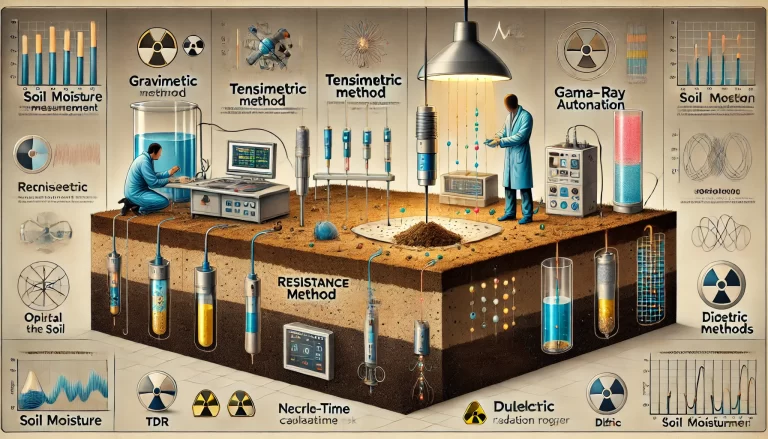Accurate measurement of soil moisture content is critical as it directly influences crop growth by indicating water availability and affects nutrient dissolution, transfer, and microbial activity in soil. Beyond agriculture, soil moisture measurements are essential in engineering and construction projects, including railways, highways, hydroelectric dams, channels, and building foundations.
Various methods are utilized by soil moisture sensors, including the gravimetric method, tensiometer method, resistance method, neutron scattering, gamma-ray attenuation method, optical measurement, and dielectric methods. Here, we provide a detailed comparison of these methods:
1. Gravimetric Method
The gravimetric method involves direct measurement of soil moisture by weighing soil samples before and after drying. Although this method is considered the most accurate and serves as the standard calibration reference for other methods, it is labor-intensive, time-consuming, and unsuitable for field real-time monitoring. Hence, it is primarily used for laboratory measurements.

2. Tensiometer Method
This method measures soil matric potential, indirectly reflecting the soil moisture condition. Tensiometers are typically combined with other methods to establish soil moisture characteristic curves. They are widely used in irrigation management; however, their measurement range is limited, restricting broader application.
3. Resistance Method
The resistance method measures soil moisture by assessing changes in electrical resistance. Its calibration is complex and short-lived, leading to significant drift in measurement accuracy over time. Given its limited range and lower precision, this method has been largely phased out of practical applications.
4. Neutron Scattering and Gamma-ray Attenuation Methods
Neutron scattering and gamma-ray methods are based on radiation principles, offering high precision and rapid measurement capabilities. Despite these advantages, the inherent radiation risk poses a potential health hazard, resulting in these methods being largely abandoned in developed countries. They are now limited to specific laboratory experiments and restricted scenarios domestically.
5. Optical Measurement Method
The optical measurement method is a non-contact approach that avoids disturbance to the soil. However, it is heavily influenced by soil variability, leading to substantial measurement errors. Due to these limitations in accuracy and adaptability, the future prospects of optical soil moisture sensors remain uncertain.

6. Dielectric Methods (TDR and FDR)
Dielectric methods measure soil moisture indirectly by evaluating soil dielectric properties. The two primary dielectric approaches include Time Domain Reflectometry (TDR) and Frequency Domain Reflectometry (FDR). These methods provide rapid, accurate, and non-destructive soil moisture measurement. Advantages include ease of operation, high accuracy, and suitability for continuous monitoring, both at surface and soil-profile levels. They can also be integrated into automated, multi-point monitoring systems, offering remote data acquisition and simplified analysis. Currently, dielectric methods are the preferred and most widely adopted soil moisture measurement solutions both domestically and internationally.
